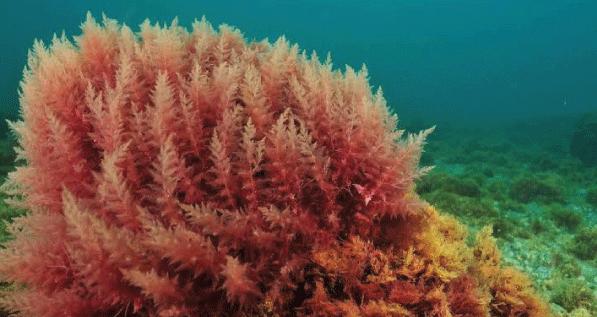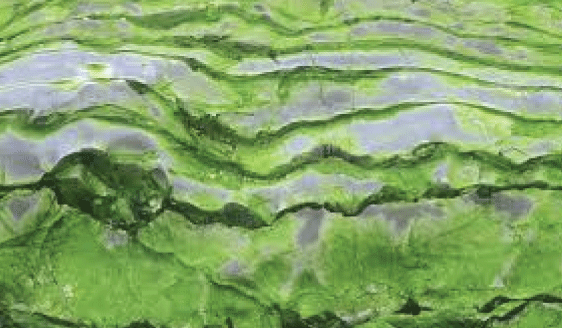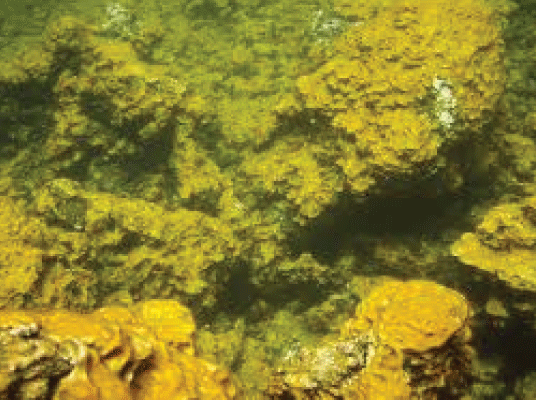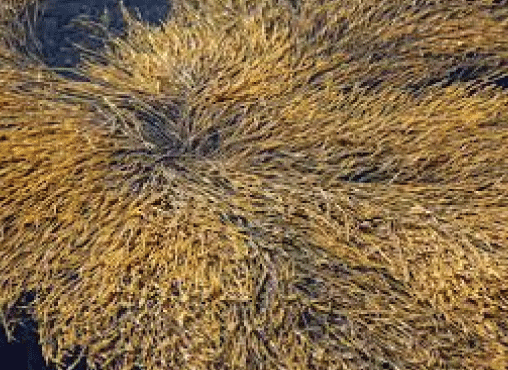Types of Algae
Algae are living & aquatic organisms that perform photosynthesis and belong to Kingdom Protista. Algae is also treated as a term used for all the aquatic living organisms that perform photosynthesis. Sizes of algae vary from microscopic to macroscopic (like in the case of giant kelp, which also has a leafy appearance). All the algae species lack a vascular system for circulating nutrients in their body, and most of them are found to be unicellular, but some of them also exist in multicellular form. Algae always need sunlight and to be in water or a water source around them along with chlorophyll to survive.
Eukaryotic algae species reproduce by the mean of sexual reproduction, and that’s why variations are much common among them. Eukaryotic algae possess both male and female gametes in their body (dimorphic characteristic), and these gametes fuse to form the zygote. But this pattern is not followed in the prokaryotic algae species, and they produce motile spores, which are later divided by the mitosis process and produce new alga. Common examples of algae, such as kelps, phytoplankton, and algal blooms, can be seen in everyday life. Phytoplankton, which produces almost 70% of total oxygen, are the first organisms that produce oxygen on earth. Therefore, they are the leading primary microorganisms that help in the continuation of the oxygen cycle on earth.
Different Types of Algae
There are multiple types of algae species present, but some are prominent, and the rest are rare. The algae are divided into various types according to their morphological and general characteristics, including their appearance, habitats, food habits, etc. The most common types of algae are red algae, brown algae, green algae, golden algae, etc. Following is the description of the most common types of algae:
1. Red Algae

Red Algae belongs to the division Rhodophyta, one of the oldest groups of the eukaryotic algae found on earth. The name Rhodophyta is taken from the Greek language where ‘rhodon’ in ancient Greek resembles a rose, and ‘phyton’ resembles ‘plant’. The Rhodophyta division comprises over 7000 currently recognized species (with all the ongoing revisions in taxonomy), and it is one of the largest phyla of Algae. The majority of species (approximately 6800) from the Rhodophyta division are found in the ‘Florideophyceae’ class, and most of them are consist of marine algae with multicellular division. Rhodophyta is an important source of food which includes nori and many other things. In Asia, the high nutrient value, which includes vitamins and other minerals, of these foods makes them so much popular. The cultivation of these foods obtained from Red Algae is often very simple, which began in Japan around 300 years ago.
2. Green Algae

Green Algae are the eukaryotic organisms that constitute the most heterogeneous group of photoautotrophic protoctists. They are characterized by the presence of chlorophylls a and b, which are also their major photosynthetic pigments. Flagella of green algae are of whiplash (smooth) type, and starch is located within their chloroplasts which act as the major storage product. The ability of green algae as single-cell species in exploiting resources can be very different concerning resistance to flushing, light-harvesting, and nutrient uptake. The bright green color of green algae is because of chloroplasts that contain both chlorophylls a, and b. Green algae also have accessory pigments, i.e., xanthophylls (yellow) and beta carotene (red-orange), in their stacked thylakoids. Green algae store carbohydrates in the form of starch, and their cell walls usually contain cellulose.
Green Algae are anchored by fibrous strands and a cross-shaped system of microtubules, and only motile male gametes of charophytes have flagella. The members of green algae, which belong to the class Chlorophyceae, undergo closed mitosis, which is the most common form of cell division among all green algae species. Mostly green algae are found in the freshwater environment where freshwater is present in very good amounts, and there they are attached to wood or submerged rocks or sometimes as a scum on the stagnant water (still water).
3. Golden Algae

The Chrysophycea, the common component of the plankton groups found in oligotrophic lakes, is commonly known as Golden Algae or sometimes even called Golden-Brown Algae. Sometimes, golden algae term is also used to refer to a single species of algae, i.e., Prymnesium parvum (An algae species that cause fish kills in the freshwater habitat). The scientific name for golden algae, chrysophyte, is taken from the ancient Greek language in which ‘khrusós’ stands for ‘gold’, and ‘phyte’ means ‘plant.’
Chrysophytes or Golden Algae were once considered a specialized form of the Blue-green Algae (Cyanobacteria) group because of the presence of the fucoxanthin pigment. Because golden algae species have complete fossil records, modern botanists confirmed that these species are not a specialized form of Blue-green Algae but rather an associated ancestor that did not possess the capability to photosynthesize. Most of the golden algae species belong to freshwater habitats, and all of them are primarily found in lakes and rivers. Prymnesium parvum is a golden algae species generally associated with a harmful algal bloom, and it is also famous for its toxins which can cause fish kills.
4. Brown Algae

Brown Algae are a large group of multicellular algae, which comprises the class Phaeophyceae. Most of the species belonging to the Brown algae group are found in the marine environment, where they play a major role in the food cycle and food web. Brown Algae also includes many colder water environment seaweeds that are found in the northern hemisphere. Many species of brown algae, such as species belonging to order Fucales, are commonly found growing alongside the rocky seashores. Also, many brown algae species that form kelp forests are used by humans as a source of food.
Note: Blue-green Algae, a famous type of algae, is Cyanobacteria and not an algae group.
